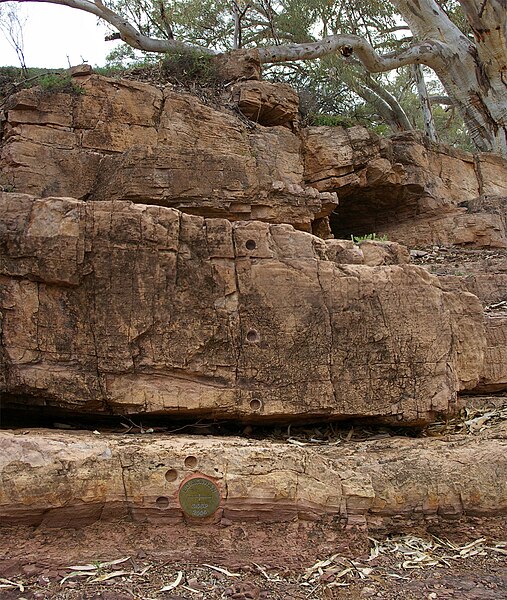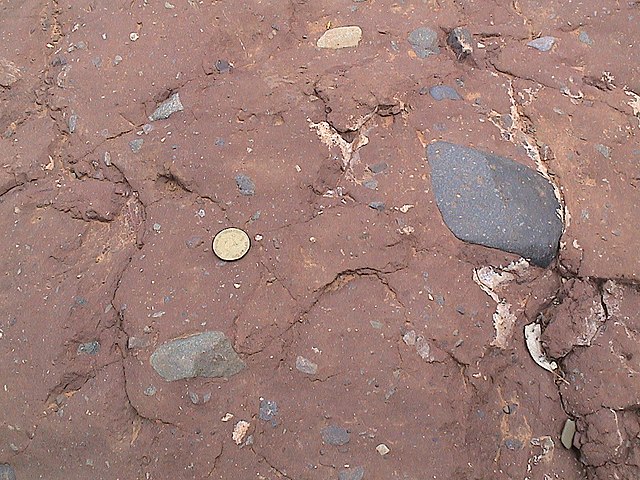The Ediacaran is a geological period of the Neoproterozoic era that spans 96 million years from the end of the Cryogenian period at 635 Mya to the beginning of the Cambrian period at 538.8 Mya. It is the last period of the Proterozoic eon as well as the last of the so-called "Precambrian supereon", before the beginning of the subsequent Cambrian period marks the start of the Phanerozoic eon, where recognizable fossil evidence of life becomes common.
The 'golden spike' (bronze disk in the lower section of the image) or 'type section' of the Global Boundary Stratotype Section and Point (GSSP) for the base of the Ediacaran System
The 'golden spike' marking the GSSP
Archaeaspinus, one of the members of the Ediacaran biota which is one of the representatives of the Phylum Proarticulata which also includes Dickinsonia, Karakhtia and numerous other organisms.
The Cryogenian is a geologic period that lasted from 720 to 635 million years ago. It forms the second geologic period of the Neoproterozoic Era, preceded by the Tonian Period and followed by the Ediacaran.
Diamictite of the Elatina Formation in South Australia, formed during the Marinoan glaciation of the late Cryogenian




